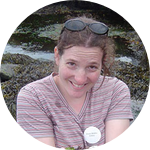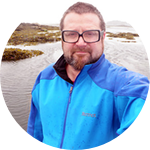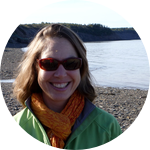About This Project
Ask the Scientists
Join The DiscussionWhat is the context of this research?
Heterosiphonia japonica is a red seaweed that was first documented in New England in 2007. Since 2007, this seaweed has increased its geographic range and grown in abundance. This seaweed is tricky to identify as it looks similar to other filamentous red algae. The rise of citizen science efforts has also increased in scope and numbers in recent years and our goal is to employ citizen scientists to assist in collecting, identifying, and documenting the range expansion of this red seaweed in the Gulf of Maine.
What is the significance of this project?
This research is important at this present time because this invasive red seaweed has not be identified in the mid-coast and downeast regions in Maine. It has, however, been documented in Atlantic Canada (Mahone Bay, Nova Scotia) and Southern Maine (Cape Elizabeth). This project will be a proof of concept of using coastal citizens (fisherpeople, mariners, recreational boaters, beachcombers, etc) to assist in the scientific collection and documentation of this biological invasion. Often citizens would like to participate in science and this project provides an opportunity to become involved. The three investigators are phycologists (people who study algae) who are marine educators, molecular ecologists, and natural historians). Each of them have spent time in Maine and are eager to become more involved in citizen-science projects.
What are the goals of the project?
The funds will allow for the preservation and shipment of putative Heterosiphonia japonica to the researchers, as well as the DNA extraction and genetic sequencing reactions to positively identify the specimen to validate whether the collected seaweed is Heterosiphonia japoinica.
Budget
The budget will allow for the preservation (drying in silica gel) and shipment of seaweed from NH, Maine and Atlantic Canada to the researchers. The budget also covers the cost of extracting the DNA and using the polymerase chain reaction (PCR) to amplify a region of the DNA (called the universal barcode) that will determine whether or not the sample is the invasive red seaweed or something else.
Meet the Team
Affiliates
Affiliates
Team Bio
I became captivated with algae when I was fourteen years old and spent two weeks at a marine science program on Mount Desert Island, Maine. Most of the other students were interested in marine mammals, sharks, and sea turtles yet what rocked my world was keying out local seaweeds with a field guide. I'd never seen such diversity and beauty and I wanted to learn more. I've spent the last 12 years in Maine, studying the reproductive ecology and population genetics of a common brown seaweed (Fucus vesiculosus) and researching the reproduction timing (phenology) of another brown seaweed (Ascophyllum nodosum) in relation to changes in sea surface temperatures.While in grad school, I found citizen-based science. There is so much enthusiasm, interest, and expertise that can be harnessed from a community of interested people. A goal of mine is to teach appreciation and understanding of the often under appreciated and misunderstood algae. Working with Nic and Julie on this Heterosiphonia japonica project will provide meaningful information to a variety of stakeholders, and start conversations about the importance algae. Identifying and documenting the red seaweed invasion is best accomplished by many people collaborating and I'm excited for the chance to engage the public in participating.
Nic Blouin
Postdoctoral Researcher in Ecological and Evolutionary GenomicsIn a former life as a freelance photographer, I discovered the beauty of marine macroalgae.. Continue reading on Nic's profile..
Julie A. Koester
Postdoctoral Researcher, Mount Allison UniversityWhen I was seven years old, I’d never seen the ocean..Continue reading on Julie's profile..
Jessie Muhlin
I became captivated with algae when I was fourteen years old and spent two weeks at a marine science program on Mount Desert Island, Maine. Most of the other students were interested in marine mammals, sharks, and sea turtles yet what rocked my world was keying out local seaweeds with a field guide. I'd never seen such diversity and beauty and I wanted to learn more. I've spent the last 12 years in Maine, studying the reproductive ecology and population genetics of a common brown seaweed (Fucus vesiculosus) and researching the reproduction timing (phenology) of another brown seaweed (Ascophyllum nodosum) in relation to changes in sea surface temperatures.
While in grad school, I found citizen-based science. There is so much enthusiasm, interest, and expertise that can be harnessed from a community of interested people. A goal of mine is to teach appreciation and understanding of the often under appreciated and misunderstood algae. Working with Nic and Julie on this Heterosiphonia japonica project will provide meaningful information to a variety of stakeholders, and start conversations about the importance algae. Identifying and documenting the red seaweed invasion is best accomplished by many people collaborating and I'm excited for the chance to engage the public in participating.
Nic Blouin
Postdoctoral Researcher in Ecological and Evolutionary GenomicsIn a former life as a freelance photographer, I discovered the beauty of marine macroalgae.. Continue reading on Nic's profile..
Julie A. Koester
Postdoctoral Researcher, Mount Allison UniversityWhen I was seven years old, I’d never seen the ocean..Continue reading on Julie's profile..
Nic Blouin
In a former life as a freelance photographer, I became increasingly interested in the natural beauty of marine macroalgae during trips to the shore. I began using seaweeds as subject matter in cyanotype images in similar ways that naturalists like Anna Atkins had done over 150 years ago. This fed into my naturalist’s curiosity regarding the complex ecology in the intertidal zone where organisms are subjected to daily fluctuations in temperature and nutrients, predation, and competition. Now, my interests broadly relate to life history evolution and how these adaptations function to provide mechanisms for organisms to persist as members in complex intertidal communities.
I am currently focusing on a group of red seaweeds that have evolved to abandon photosynthesis and parasitize their closest evolutionary neighbors (adelphoparasitism). My interests here are principally related to the developmental similarities between the adelphoparasite and host life history stages, and how these evolutionary adaptations are conserved across red seaweeds In other words: what can change and which aspects of life history are constrained when an organism abandons a free-living life style? In a related project concerning organellar (plastid and mitochondrion) maintenance, we are looking into the evolutionary trajectories of genes that have been transferred to the nucleus but still function in organelles.
In the investigation we propose here, I feel that the information gathered here by citizen scientists and analyzed by us will provide exciting insight into how adaptation effects the success or failure of organisms invading new territory (and I think it will be a ton of fun!)
Julie A Koester
When I was seven years old I saw a line drawing of a tropical giant clam in my book, but I’d never seen the ocean. The next year I stood on a cold, hard-packed intertidal sand beach in Alaska looking for the tell tale holes of razor clams to dig. That was my first taste of seawater. I went on to study seaweeds as an undergraduate researcher and have since been “downsizing” to focus on their microscopic cousins, the diatoms. I became familiar with the Gulf of Maine through sampling diatoms. My research interests lie in the mechanisms of adaptation and speciation of these beautiful single-celled phytoplankters with respect to climate forcing. I employ molecular and physiological techniques to deduce the response of diatoms to different environmental variables such as changing temperature. This information is placed in the context of the ocean, in which water is constantly being transported through tides and major currents. We might not think about it, but microscopic organisms can become invasive – it is just easier to notice the large organisms such as the red alga Heterosiphonia japonica . So these are the organisms that we need to start with in understanding the dynamics of species introductions and invasions. The same environmental conditions and transporting currents that affect the diatoms can also affect larger algae. This is why I am excited to join Jessie and Nic in tracking and monitoring H. japonica as it works its way into new habitat.
Additional Information

Project Backers
- 12Backers
- 12%Funded
- $741Total Donations
- $61.75Average Donation


